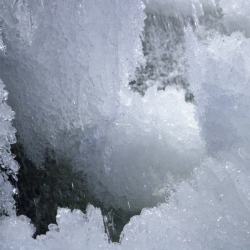
The assessment comes from the new observations at the 500km-wide world made by the Cassini space probe. It has flown through and sampled the waters from a subsurface ocean, that are being jetted into space. Cassini’s chemistry analysis strongly suggests the Enceladean seafloor has hot fluid vents – places that on Earth are known to teem with life.
To be clear: the existence of such hydrothermal systems is not a guarantee that organisms are present on the little moon; its environment may still be sterile. But the new results make a compelling case to return to this world with more sophisticated instrumentation – technologies that can re-sample the ejected water for clear evidence that biology is also at play.
"We’re pretty darn sure that the internal ocean of Enceladus is habitable and we need to go back and investigate it further," said Cassini scientist Dr Hunter Waite from the Southwest Research Institute in San Antonio, Texas.
"If there is no life there, why not? And if there is, all the better. But you certainly want to ask the question because it’s almost as equally as interesting if there is no life there, given the conditions," he told BBC News.
The sub-surface ocean on Enceladus is thought to be many kilometres deep, kept liquid by the heat generated from the constant gravitational squeezing the moon receives from the mighty Saturn.
Cassini has already established that this voluminous liquid is in contact with the rock bed from the types of salts and silica that have also been detected in the jets.
But what scientists really wanted to know is if a particular interactive process seen at Earth was taking place in the distant abyss – something called serpentinisation.
At the mid-ocean ridges on our planet, seawater is drawn through, and reacts with, hot upwelling rocks that are rich in iron and magnesium. As the minerals in these rocks incorporate H2O molecules into their crystal structure, they release hydrogen – a byproduct that can be used by some microbes as an energy source to drive their metabolism.
It is the definitive signal for molecular hydrogen in the plumes of Enceladus that Cassini has now confirmed.
"If you were a micro-organism, hydrogen would be like candy – it’s your favourite food," explained Dr Chris McKay, an astrobiologist with the US space agency (Nasa).
"It’s very good energetically; it can support micro-organisms in grand style. Finding hydrogen is certainly a big plus; icing on the cake for the habitability argument, and a very tasty one at that."
